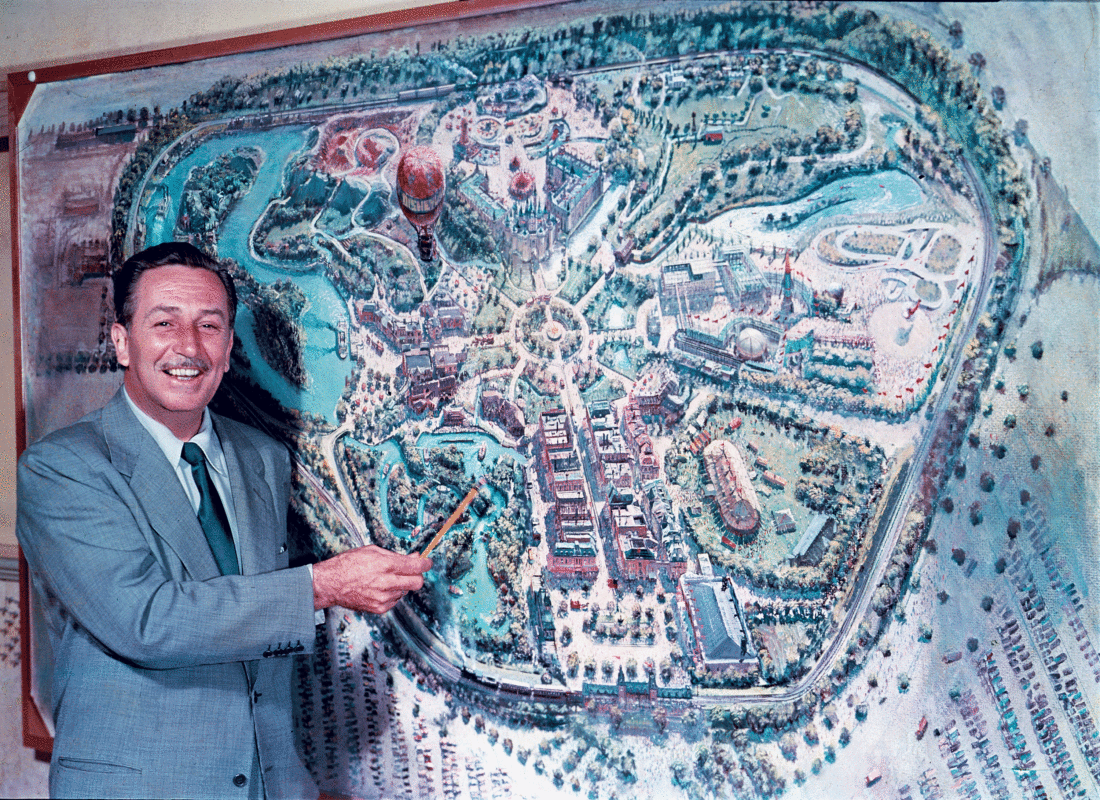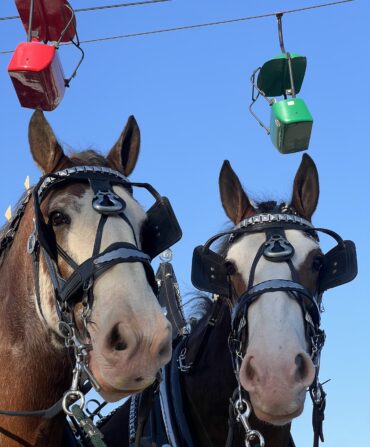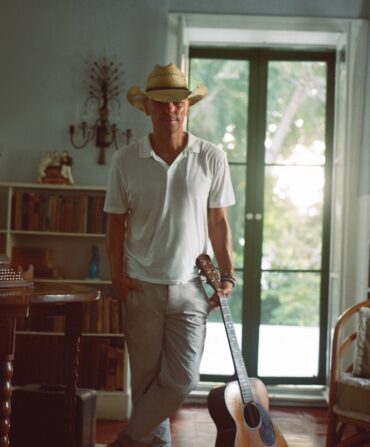This story begins, as many good Southern tales do, with an antiques shop. The treasure-hunter was Walt Disney himself and the setting was the late 1950s in a curio store in New Orleans, where Disney spotted a gilded metal cage with a mechanical singing bird perched inside. Enchanted, he brought the find home to Anaheim, California, where he implored the staff at his recently opened Disneyland to understand how the bird moved and sang—and then improve upon it.
That work led to one of Disney’s many entertainment advances: animatronic characters (of the sort now seen at amusement parks the world over) that sang and danced in Disneyland’s Enchanted Tiki Room and, later, in popular rides such as Pirates of the Caribbean at Disneyland and at Disney World in Orlando, Florida, which opened in 1971, five years after Walt’s death.
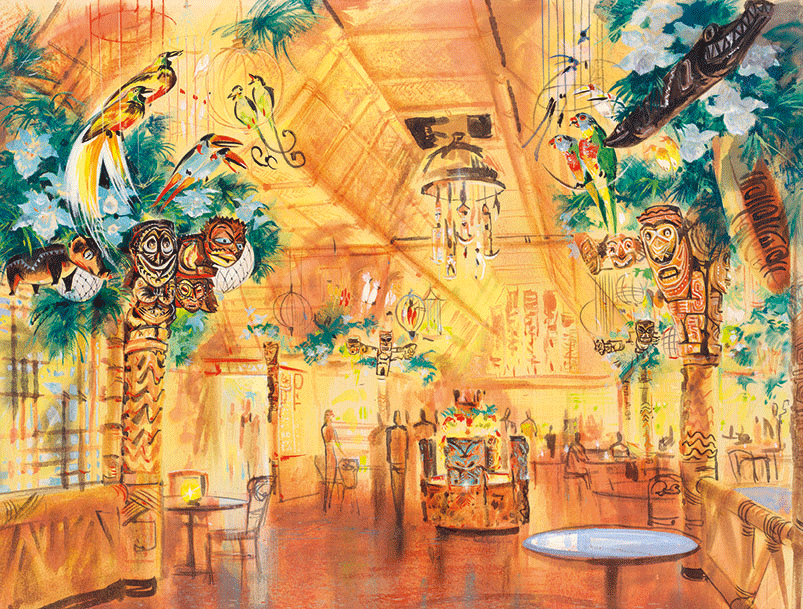
Photo: COURTESY WALT DISNEY ARCHIVES
Enchanted Tiki Room restaurant concept art, 1962.
“Walt didn’t live to see the rest of what he championed,” says the writer and researcher Marcy Carriker Smothers, whose book, Eat Like Walt: The Wonderful World of Disney Food, shares the places, people, and cuisines that inspired Disney and the worlds he created. “But he was there to open and dedicate New Orleans Square.”
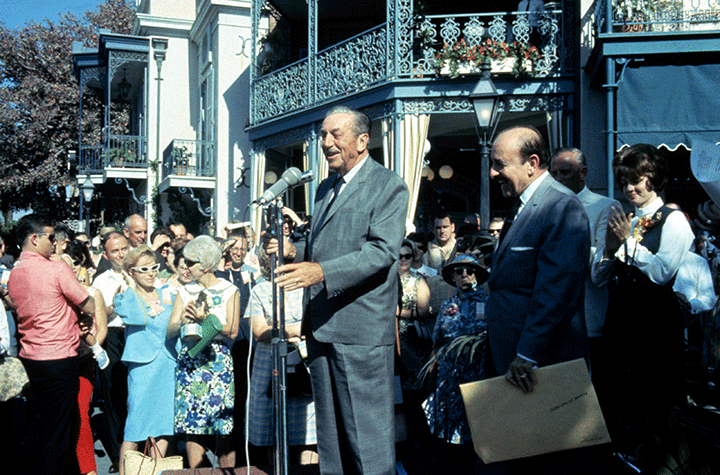
Photo: COURTESY WALT DISNEY ARCHIVES
Walt Disney dedicates Disneyland’s New Orleans Square in 1966.
New Orleans Square in Disneyland was Walt’s last major project. Dedicated on July 24, 1966, just months before his death that December, the French Quarter-themed portion of the park drew heavily on his love of the Crescent City and its food culture. (Rumor has it that Disney even considered New Orleans for his second park before deciding on Florida instead.)
At the grand opening, Walt served a celebratory meal of shrimp remoulade, gumbo, croissants, and a flaming dessert. The guest of honor? The real mayor of New Orleans at the time, Victor H. Schiro, who arrived by the Mark Twain steamboat on the banks of the Rivers of America. Walt joked that his New Orleans was cleaner than the mayor’s city, and was more expensive ($18 million to build) than the Louisiana Purchase (just over $11 million). The New Orleans Times-Picayune declared, “No other city in America has been so honored by Disney,” and the paper reported on the festivities, which included a second line led by Walt and the mayor.
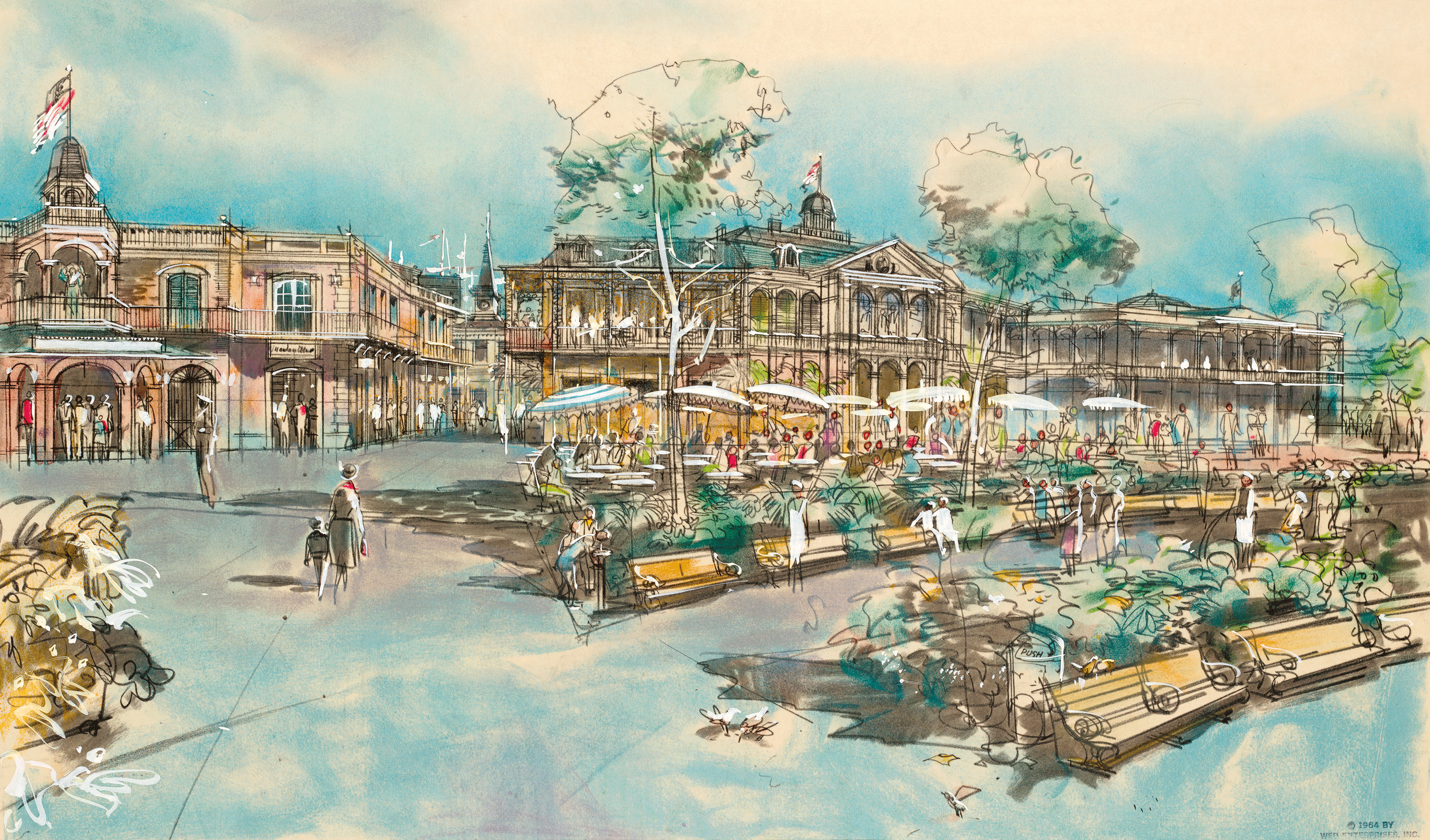
Photo: COURTESY WALT DISNEY ARCHIVES
New Orleans Square concept art, 1964.
The mock Crescent City that Walt created contained two New Orleans-inspired restaurants: the Creole Café and Blue Bayou. The café served chicken gumbo with Cajun rice, strong coffee, and French pastries likes napoleons and éclairs. Blue Bayou, a real Spanish moss-draped brasserie, was the park’s first to require reservations.
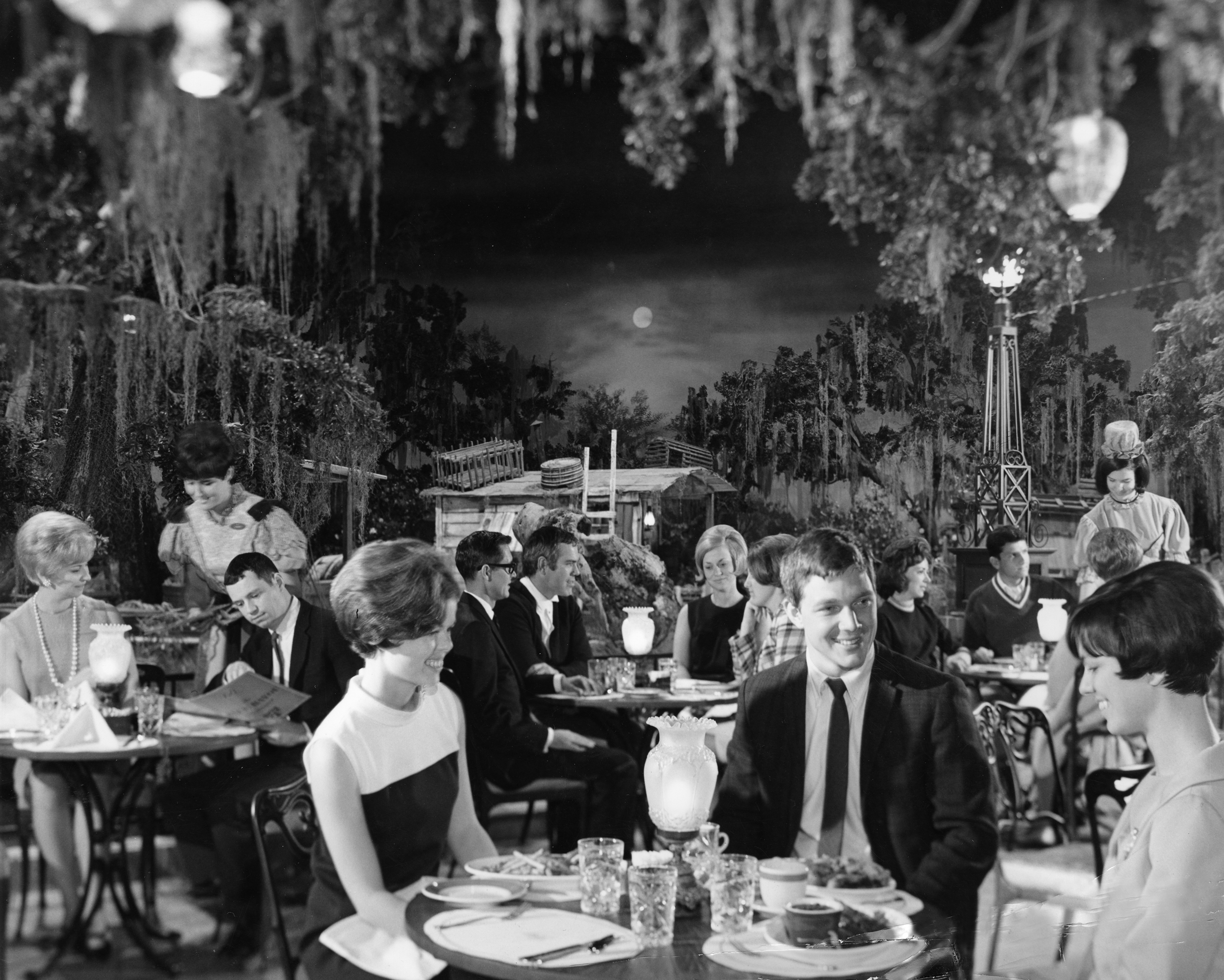
Photo: COURTESY WALT DISNEY ARCHIVES
Diners at Blue Bayou in 1967.
Dishes included oysters Bienville and Rockefeller, crab and shrimp over rice, and the still-popular Monte Cristo sandwich—what Smothers calls a “cousin to France’s Croque Monsieur.” (Disney’s Monte Cristo recipe, along with dozens more and a trove of never-before-seen photos and drawings, are included in Smothers’ book.)
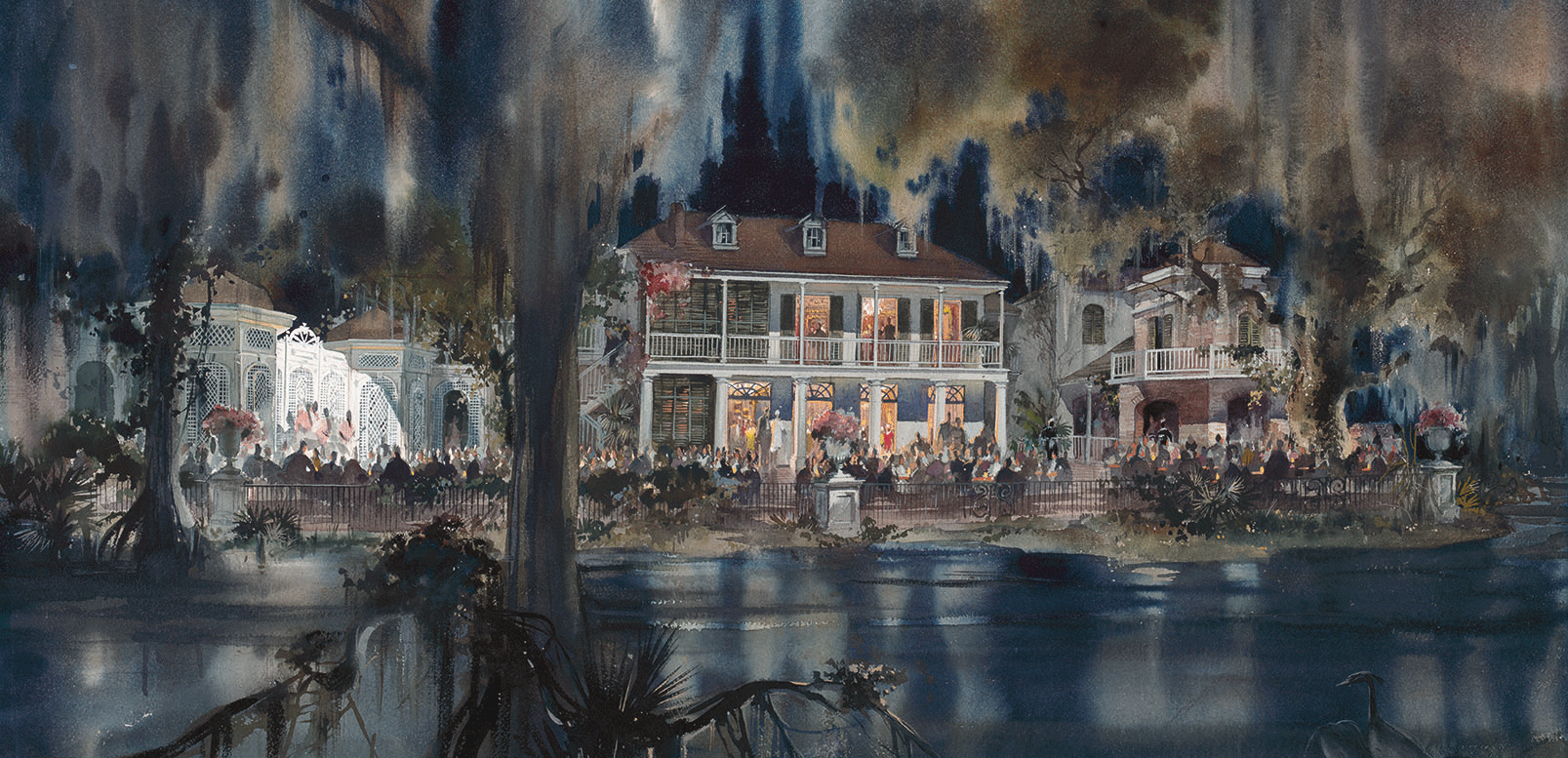
Photo: COURTESY WALT DISNEY ARCHIVES
Blue Bayou concept art, 1960s.
The only place in Disneyland that regularly serves alcohol also originated in New Orleans Square—the legendary Club 33, built as an exclusive dining room for Walt to entertain investors and dignitaries. Club 33’s kitchen adjoined an apartment intended as a private residence for the Disney family, and Walt again traveled to New Orleans to buy antiques for his “Royal Suite.”
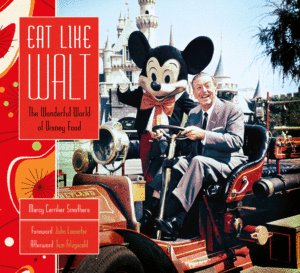
Photo: COURTESY WALT DISNEY ARCHIVES
Author Marcy Carriker Smothers’s book, Eat Like Walt: The Wonderful World of Disney Food, explores the cuisines that inspired Walt Disney.
“Everything Walt did was about story and details,” Smothers says. “Tremendous research went into everything, so his work was accurate with a little magic mixed in.” Walt died just before his apartment in New Orleans Square was completed, but visitors can still see the “W” cast in wrought iron on the veranda, an emblem that looks out over a visionary’s dreamscape inspired by an iconic Southern city.


